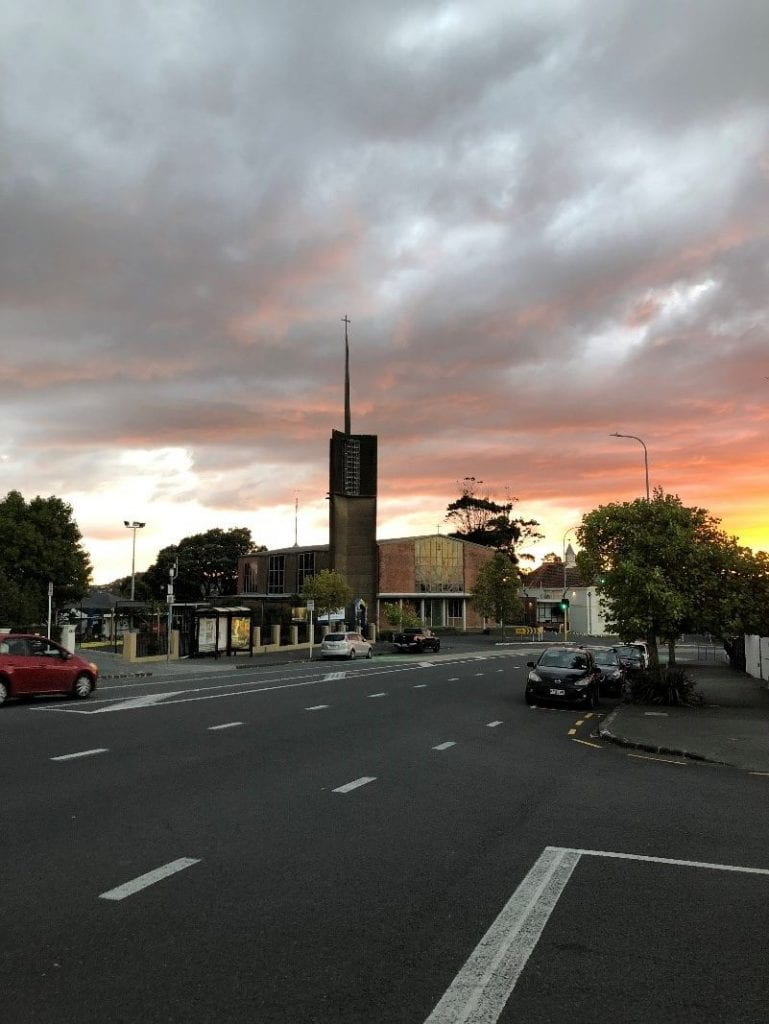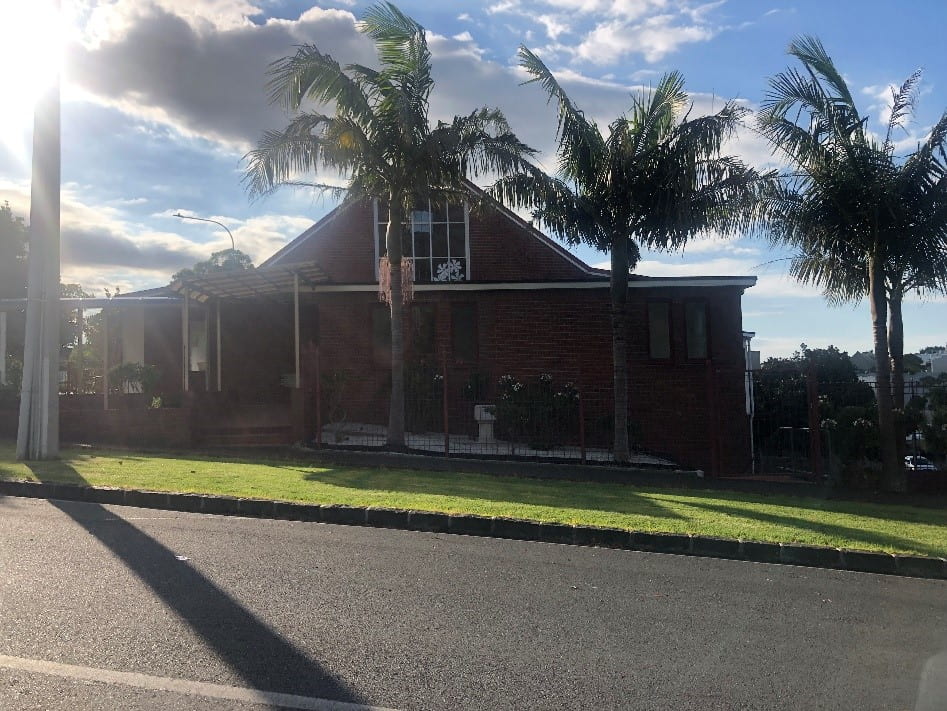Part Two
The Role of the Church in Pacific Immigrants’ Lives
by Flynn McGregor-Sumpter*
Religious faith and the Church play a significant part in the lives of many Pacific Island people. From the beginning of Polynesian immigration to New Zealand, the Church played a prominent role for the Pacific communities in this country. For Pacific people, “the Church was the place to which one went on all ordinary occasions, and it was a normal and essential part of life”. Furthermore, many Polynesians saw the Church as the centre of both their religious and social lives. Religion was one aspect of life that the Pacific immigrant to Auckland did not need to worry about, as they were encouraged to worship in existing, largely Pākehā, congregations in central Auckland, of which there were numerous. Specifically in Ponsonby, it was reported by ‘The Catholic Weekly’ in October 1970 that there was perhaps no greater concentration of religious parishes in the country than in the central Auckland suburb.
With the numerous churches in the local area to choose from, Polynesian immigrants looked to the Church as a source for identity, unity and practical help in adjusting to the new society they were living in. Furthermore, the substantial number of churches in inner-city Auckland meant that the Pacific population in this region continued to grow. Pacific migration occurred not only through family connection, but also through Church links, so for that reason many immigrants arrived from Polynesia and settled in ‘Greater Ponsonby’. For example, Freeman’s Bay housed many Pacific Islanders due to its close proximity to a number of churches.
The Church in Auckland also replicated the role that the village played in the life of Polynesians back in the Islands. Much of Pacific Islanders’ community life and personal social identity were strongly linked to three closely integrated institutions: family, church and village. Having left their village behind, Pacific immigrants in Auckland obviously did not have those same connections in their new city. The new or existing church communities that were developed in Auckland thus acted as a surrogate village, with the minister or pastor similar to that of a village chief – the most respected figure in the church community. In much the same way that the village operates, the Church became the focus for social activities, professional advice, health and educational services, and sport and music groups, for many immigrant families. All this was of course alongside the Church providing a place for religious worship. Moreover, in Tongan churches specifically, counselling services were occasionally provided for those who were struggling with adjusting to the new way of life in Auckland.
The Church clearly held significant value for Pacific Islanders who had made central Auckland their home, and so with the growing numbers of immigrants in the 1960s and 1970s specific Polynesian churches began to flourish around the inner-city. Previously, early Pacific immigrants were encouraged to worship with existing, predominantly Pākehā congregations in central Auckland. However, as more migrants were arriving from the Pacific Islands from the 1950s onwards, new churches were established in order to specifically provide for the spiritual and pastoral needs of these new Pacific communities.
The first church formed specially for Polynesian members was the Pacific Islanders’ Congregational Church (PICC), which was set-up in Newton in 1947. Within the PICC, congregations were formed by various ethnic communities and the body responsible for church governance was represented by individuals from Western Samoa, the Cook Islands, Niue and the Tokelau Islands. In 1963 a breakaway church called the Congregational Christian Church of Samoa (CCCS), or Ekalesia Fa’apotopotoga Kerisiano Samoa (EFKS), was formed. A further change emerged for the PICC in 1969 with a merger of the Congregational and Presbyterian churches. This saw the PICC become the Pacific Island Presbyterian Church (PIPC). The fact that the earliest Pacific migrants to Auckland established this church, and continued to seek ways to improve it over the ensuing decades, reflects the importance of the church in the Pacific community. Pacific families wanted a place where they could have their spiritual needs met, as well as creating a “Pacific-focused and Pacific-controlled social and cultural” institution, and the PICC/PIPC was a foundational place for this to occur.

Photograph taken in the 1960s of the Newton Pacific Islanders Congregational Church (PICC). The original wooden church building is on the left – in 1979 this building was demolished and replaced by a two-storey halls complex.
Many more churches were established in central Auckland specifically for Pacific Immigrants. These included St Joseph’s Catholic Parish, Grey Lynn, which was created in 1961 and caters for a largely Tongan congregation. The Samoan Methodist Church was set-up on Arch Hill in 1973, and a Protestant congregation of Tokelau and Tuvalu members also created a church in Grey Lynn around this time.

St Joseph Catholic Church, Grey Lynn, taken on Great North Road

Grey Lynn Presbyterian Church, which holds Tokelaun, Tuvaluan, and Samoan congregations
These Pacific churches were able to be established, and remain prevalent, due to the fact that many Pacific Islanders contributed financially to help maintain their churches. It was not uncommon for regular churchgoers at traditional Polynesian churches to consistently give large portions of their income “to sustain both the buildings and church operations”. On top of this, many contributions were made outside of ordinary church life, such as special requests to support the pastor or their family, special projects, ceremonies or celebrations.
The growth of Pacific churches in the central Auckland region, and the efforts members of these churches went to in order to maintain them, highlights not only the importance of the church in the life of Pacific Islanders, but also the fact that inner-city Auckland was the place where Polynesian immigrants were setting themselves up to live. By establishing so many churches in and around the Karangahape Road/Great North Road ridgeline, the desire to create a community in this region in the 1960s and 1970s is clear for us to see. Pacific immigrants wanted to maintain their cultural identity in their new place of residence, and the role of the church in doing this cannot be understated.
The significance of the church is further highlighted by the fact that, after the gentrification of central Auckland, and Pacific people were largely removed from these suburbs, they continued, and still continue, to return to the inner-city to attend church services.
